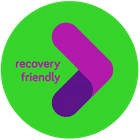Although the series is a highly fictionalized true story, every episode of Netflix’s Painkiller begins with a non-actor recounting when they lost their loved one to opioid abuse. At the start of the opioid epidemic, OxyContin’s spark lit the flame that would envelop many communities throughout the United States.
Painkiller traces this epidemic’s origins and tells a story of corporate greed leading to human harm. One of the main factors that contributed to the opioid epidemic is the overprescribing and aggressive marketing of OxyContin, a powerful and long-lasting form of oxycodone that was introduced in 1996 by Purdue Pharma, a company owned privately by the Sackler family.
At GateHouse Treatment, we see the effects of this crisis every day. We believe that documenting its history and highlighting the adverse effects of opioid overprescription serves as a valuable lesson to avoid future problems. If we study the mistakes of the opioid crisis, we might prevent the next. In this article, we’ll look at the TV show Painkiller, delve into the history of OxyContin, examine the Sackler family’s involvement, and explore the multifaceted reasons behind the opioid epidemic.
The History of Purdue Pharmacy
Purdue is a privately held company owned by the Sackler family, whose wealth Forbes estimated to be over 10 billion. It was started as a small side business by three brothers in New York, of which Arthur Sackler was the most important for his contributions. Arthur pioneered medical advertising, and his firm went directly to physicians to convince them to prescribe. Most of the family’s wealth came from advertising drugs, including the very popular Valium.
Purdue Pharmacy was a tiny manufacturer acquired by the brothers that only gained significance following the patriarch’s death when his nephew, Richard, started climbing the ranks. Their patent on MS Contin, an opiate, was about to expire, and the drug would have faced competition from generics. Purdue needed a miracle drug to stay alive, hence, OxyContin.
What is OxyContin?
OxyContin was an innovation in the field of prescription opiates. This medication contains oxycodone as its active ingredient, a potent analgesic renowned for its effectiveness in alleviating pain. Oxycodone is 1.5 to 2 times more potent than morphine and, at the time of OxyContin’s development in the 90s, had previously been used in drugs like Percocet, which combines it with acetaminophen (Tylenol). However, OxyContin would only contain oxycodone.
How could a drug twice as powerful as morphine be the only active ingredient? The answer lies in its extended-release formulation. Opioids traditionally provide quick but short-lived pain relief, whereas they supposedly designed OxyContin to deliver continuous and extended pain relief over approximately 12 hours. While doctors saw opioids as something to alleviate the sharp pain of operation or cancer patients, this extended-release mechanism was for individuals with chronic pain.
Purdue promoted OxyContin as a safe and effective treatment for chronic pain, but it soon became a source of abuse, addiction, and overdose for many patients and recreational users. The one pill at 8 AM and one at 8 PM marketing slogan was false, and many users would feel withdrawal 8 hours in.
Purdue Pharma and its executives were accused of misleading doctors and patients about the risks and benefits of OxyContin, manipulating data and research to support their claims, bribing officials and regulators to avoid scrutiny and sanctions, and hiding their wealth and assets from lawsuits and creditors.
How OxyContin Started The Opioid Epidemic
According to a landmark New Yorker article, The Family That Built an Empire of Pain, this is how the opioid epidemic unfolded:
1. FDA approval: Purdue received this by covering up negative experiences with OxyContin during human trials. In Puerto Rico, where they conducted the test on women undergoing labor, many woke up at night demanding more before the 12-hour instruction.
The FDA bureaucrat responsible for deeming if OxyContin was safe for the public accepted an employment offer from Purdue upon leaving the government. They were also allowed to market the drug as a safer alternative with a low chance of addiction, which they knew to be false.
2. Public Relations: Purdue hired many doctors to publish studies favorable to OxyContin. They also put several on the speaking circuit. At this time, there was a growing interest in the medical field of treating pain. Whereas doctors in the past believed pain was a side effect of something, treating it seemed humane. Purdue capitalized on this with OxyCodone, promising relief and an uninterrupted night’s sleep with virtually no risk.
They also sponsored medical seminars that often downplayed the risks of OxyContin addiction while highlighting its benefits. Doctors who attended these programs were more likely to prescribe the drug.
3. Convincing Doctors: Purdue wasn’t just a pharma company; they were a sales team. They hired hundreds of dedicated salespeople to go to doctor’s offices and convince them to treat mild and chronic pain with OxyContin. If doctors pushed back, the salespeople came with gifts, misleading studies, and pre-packaged answers, assuring the drug’s safety.
They provided promotional materials, coupons for one month free, and financial incentives to encourage doctors to prescribe the medication. Purdue allegedly targeted blue-collar areas with many workplace accidents. The pressure worked, and doctors started to overprescribe.
Painkiller and the Opioid Epidemic
Wherever OxyContin went, its terrible effects followed. In the early 2000s, police departments and prosecutors offices noticed an uptick in crimes, addiction, overdose, and pharmacy robberies. OxyContin was behind many of the catastrophes. Ordinary folk went to a family physician experiencing pain, and unbeknownst to them, the doctor would prescribe an addictive opiate that needs a higher dose or frequency to maintain a high.
Quickly, addicts figured out they could crush and inhale the OxyContin, bypassing the 12-hour release window and getting a high upfront. As people died, state prosecutors and regulators started sounding the alarm, all of which Purdue denied publicly and before Congress. Their strategy blamed the victims, labeling them addicts misusing an excellent product. Coupled with aggressive government lobbying, Purdue avoided responsibility for many years and issued only token concessions.
Painkiller details these early attempts to stop Purdue from lying about the drug’s risk and give financial restitution to communities with the worst effects. The show’s narrative follows this story through the lives of three people: Richard Sackler, President of Purdeau and main pusher of OxyContin; Edie Flowers, a fictionalized lawyer concerned with the drug’s effects, and Glen Gryger, a mechanic who becomes addicted to the drug. Together, they tell the multifaceted story of corporate malfeasance causing harm and the attempts to correct it.
Many of its characters are composites of real people hurt by the drug. Glen Gryger resembles Johnny Sullivan, a construction worker featured in an early Purdue promotional video lauding the drug for fixing his chronic back pain. He became addicted to OxyContin and blacked out driving his car, dying in 2008.
The Aftermath
The show’s story has a bittersweet ending. In 2007, Purdue paid $634 million, the largest fine of a pharmaceutical company up to that date. In 2019, they filed for bankruptcy. In 2020, the Department of Justice announced Purdue agreed to pay $8.3 billion and admit they conspired to push a drug with no legitimate medical purpose. Unfortunately, no cash punishment can reckon with the thousands of lives lost to opiate abuse.
For many, OxyContin was the way into heroin. In the 2010s, when Purdue updated OxyContin not to be crushable and snortable anymore, many users switched to harder drugs. Mexican cartels moved in to supply this new demand, and by the time fentanyl caught fire, the building blocks for a tragedy were already deeply entrenched. Community after community, particularly in rural or de-industrialized areas, had been ravaged by the opioid epidemic, with the CDC reporting 80,411 opioid deaths in 2021 alone.
Painkiller is a valiant attempt to reconcile with how it got so bad, warning future generations against the greed and complacency that lead to ruin.
GateHouse Treatment and Overcoming Opioid Abuse
Many survived their brush with OxyContin by seeking help, committing to sobriety, and getting better. Based out of Nashua, New Hampshire, GateHouse Treatment is the premiere addiction rehabilitation center guaranteed to treat you compassionately and help you overcome addiction. We offer individualized therapy customized to address your needs, from outpatient to medication-assisted treatment to partial hospitalization.
At GateHouse Treatment, we are a family dedicated to getting you and keeping you clean. Move toward a healthier life by calling 855-448-3588 or scheduling a free consultation on our website.
- Cymbalta Withdrawal: Causes, Symptoms, And Management - October 12, 2023
- Boredom in Recovery: 5 Tips to Avoid Relapse - October 6, 2023
- Overconfidence and Rehab: Avoiding Relapse - October 4, 2023




